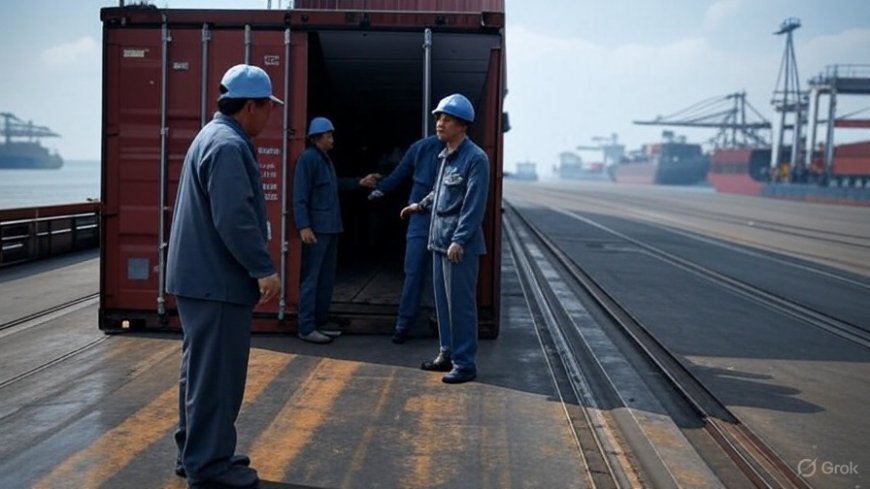How China’s Supply Chain Disruptions Are Driving Up Global Prices—and What It Means for You
Discover how China’s ongoing supply chain disruptions are causing ripple effects on global prices, from electronics to everyday goods. Understand the causes, global consequences, and expert-backed solutions.

How China’s Supply Chain Disruptions Are Driving Up Global Prices—and What It Means for You
The world economy has always been tightly interwoven with China's manufacturing might. But recent supply chain disruptions in China—sparked by strict COVID-19 policies, port congestion, geopolitical tensions, and natural disasters—have shaken global markets, triggering a cascade of inflationary pressures across continents.
This article delves into the causes behind these disruptions, how they are influencing prices globally, and what policymakers, businesses, and consumers can do to navigate this economic uncertainty.
Why China’s Supply Chain Is the World’s Backbone
China accounts for over 28% of global manufacturing output. According to a detailed McKinsey Global Institute report, China's position as the “world’s factory” stems from its robust infrastructure, skilled labor, and a deeply interconnected supply network.
From semiconductors and steel to pharmaceuticals and consumer electronics, a wide range of essential products pass through Chinese ports like Shenzhen, Shanghai, and Ningbo before reaching the global market. When these hubs slow down or shut, the consequences echo worldwide.
Key Causes of China’s Supply Chain Disruptions
1. Zero-COVID Policy Fallout
Even after the global shift toward COVID-19 normalization, China maintained stringent lockdowns well into late 2023. Major industrial cities like Guangzhou and Tianjin faced repeated shutdowns, bringing manufacturing plants and logistics operations to a standstill.
While the policy has since been relaxed, the backlog in shipping and manufacturing output has continued to strain global supply lines.
2. Port Congestion and Container Shortages
Congested ports like Yantian and Ningbo-Zhoushan saw weeks-long delays, with hundreds of container ships idling offshore, awaiting clearance. The Drewry World Container Index showed shipping container costs between China and the U.S. west coast surged by more than 300% compared to pre-pandemic levels.
More insight is available from World Shipping Council, highlighting persistent challenges in container turnaround times and inland transportation logistics.
3. Geopolitical Strains and Export Controls
Trade tensions between China and Western countries have added further complexity. Export restrictions on rare earth elements and semiconductors, coupled with increased scrutiny on foreign investments, have disrupted key technology and defense-related supply chains.
4. Climate Events and Power Shortages
Unseasonal flooding in southern China and electricity rationing due to coal shortages have hindered production. The World Resources Institute emphasizes how climate volatility is now a critical variable in manufacturing risk.
The Global Impact: Prices on the Rise
1. Electronics and Consumer Goods
Companies like Apple, Dell, and Samsung have reported shipment delays due to bottlenecks in Chinese manufacturing. The price of smartphones, laptops, and smart appliances has steadily risen, driven by both reduced supply and higher freight costs.
2. Automotive Industry
With semiconductor plants in China and Taiwan operating under strain, car manufacturers worldwide—from Ford to BMW—have scaled back production, increasing vehicle prices and extending wait times.
3. Pharmaceutical Supplies
China is the primary supplier of active pharmaceutical ingredients (APIs). Delays in delivery have impacted the availability of generic medicines, causing price hikes in critical drugs across global markets.
4. Retail and Apparel
Retail giants like Nike and H&M have reported inventory shortages. Apparel prices have surged due to delays in textile production and limited access to dyes and synthetics sourced from China.
How Businesses Are Adapting
Diversification of Supply Chains
Major corporations are investing in "China+1" strategies—sourcing from other Asian countries like Vietnam, Indonesia, and India to diversify risks. According to the Harvard Business Review, companies must build more resilient and geographically diversified networks to future-proof against disruption.
Increased Inventory and Nearshoring
Some businesses are shifting to just-in-case inventory models, maintaining higher stock levels to buffer against delays. Others are exploring nearshoring options in Latin America or Eastern Europe to reduce dependency on Asian manufacturing.
Digital Supply Chain Tools
Digital transformation is on the rise. Real-time tracking, predictive analytics, and AI-driven forecasting are being used to optimize supply chain visibility and agility. Tools like those offered by SAP Integrated Business Planning are gaining traction.
What Consumers Can Expect
-
Persistent Inflation: Prices on imported goods will likely remain elevated well into 2025.
-
Limited Availability: Expect longer delivery times for high-demand products.
-
Increased Localization: Some goods may become more locally produced, but at a higher cost.
What Can Be Done?
Policy Measures
Governments must invest in infrastructure upgrades, negotiate better trade deals, and support supply chain resilience programs. The World Economic Forum advocates for cross-border collaboration to address bottlenecks more effectively.
Consumer Awareness
Understanding the root cause of price increases helps consumers make informed decisions. Supporting locally-made goods, planning purchases in advance, and using alternative brands can ease the burden.
Conclusion: A Turning Point for Global Trade
The disruptions in China's supply chains have illuminated a harsh reality—our world is only as strong as its weakest logistical link. As we move toward 2026, the focus must shift from cost-efficiency to resilience and adaptability. Governments, businesses, and consumers all have a role to play in building a more robust global supply system.
For ongoing updates on global economic trends and supply chain news, follow trusted resources like Bloomberg Supply Chain and Reuters Business News.




















































